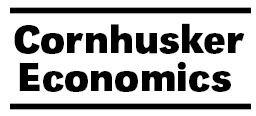Agricultural Economics Department
Date of this Version
2010
Abstract
In the October 20, 2010 issue of this newsletter we talked about the status of United States initiatives in limiting greenhouse gas (GHG) emissions. Although there are uncertainties associated with the science of climate change, some aspects of the science are known with virtual certainty (they have a greater than 99 percent chance of being true). Scientists know with virtual certainty that levels of greenhouse gases, like carbon dioxide in the atmosphere, have been increasing since pre-industrial times; that the atmospheric buildup of CO2 and other greenhouse gases is largely the result of human activities such as the burning of fossil fuels; and that increasing greenhouse gas concentrations tend to warm the planet. We also noted that international cooperation is essential to reach a solution to the problem.
We are reviewing the recent history of international negotiations on climate change and reporting on their current status in this issue.
The Kyoto Protocol is the most important global agreement on climate change created so far. It was signed in 1997 and ratified by most of the industrialized and developing countries. It is part of the negotiations held within the United
Nations Framework Convention on Climate Change (UNFCCC) started in 1992, whose goal was to limit GHG emissions.


Comments
Published by the Department of Agricultural Economics, University of Nebraska-Lincoln. Copyright 2010 Regents of the University of Nebraska.